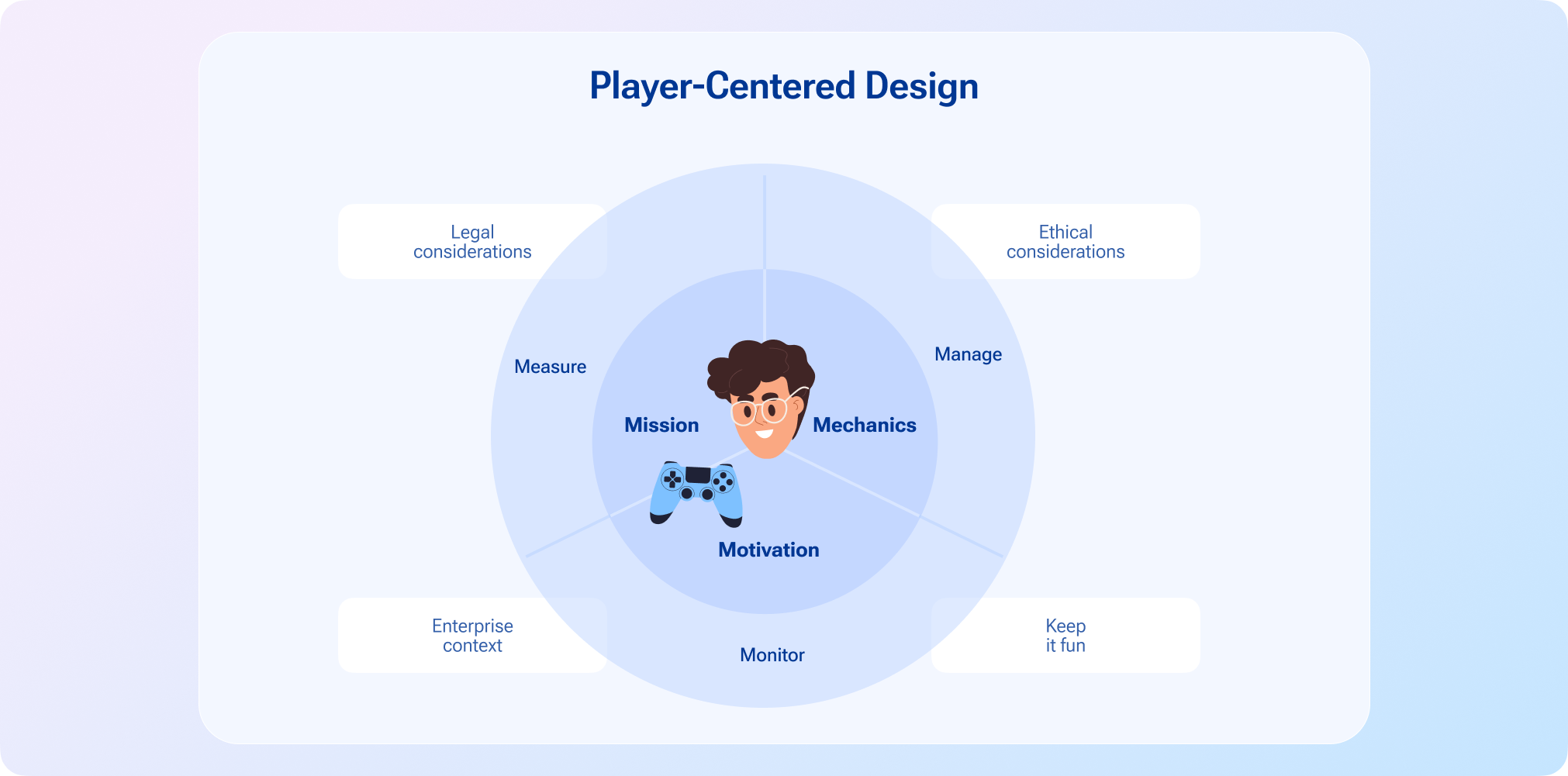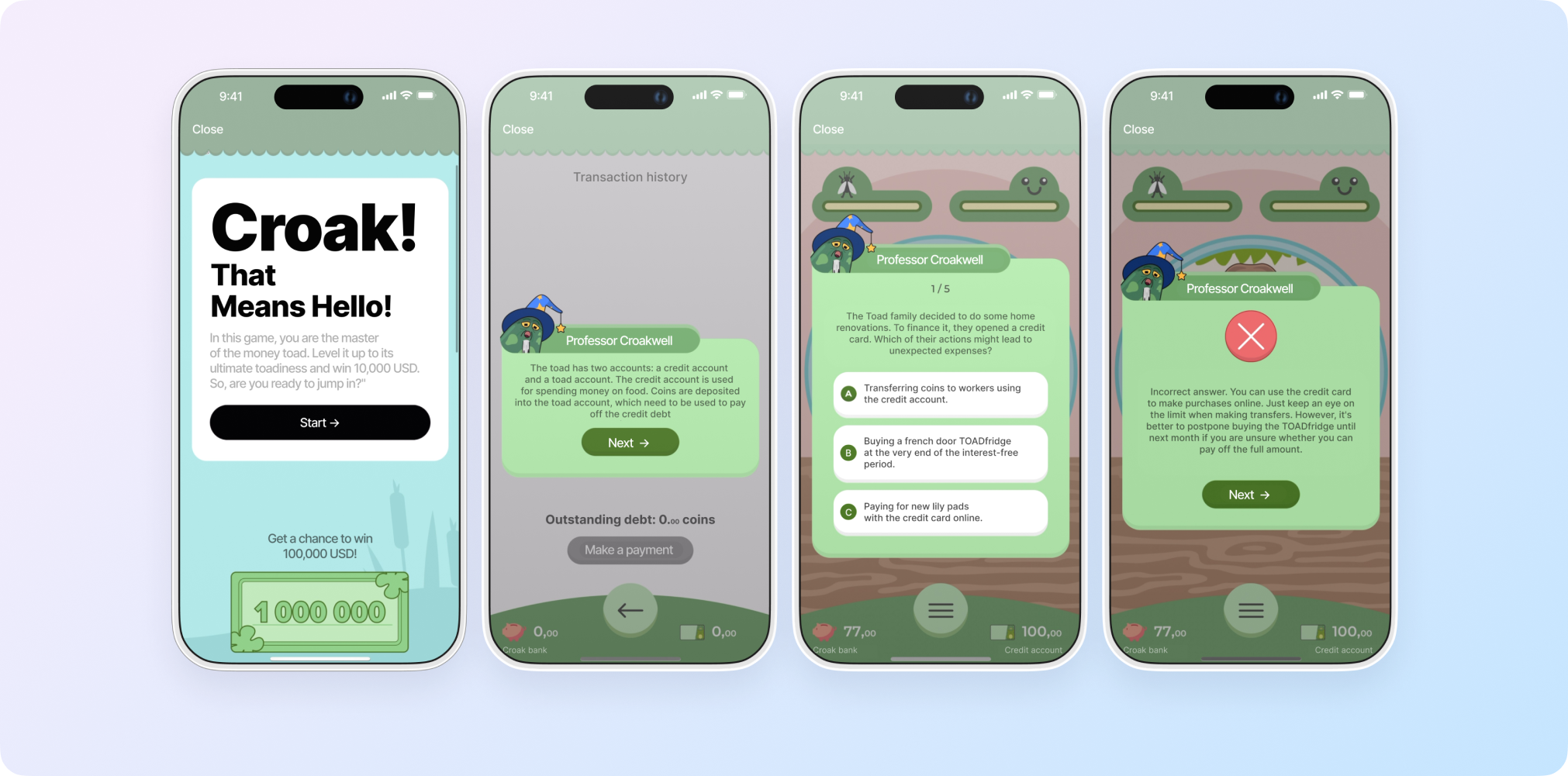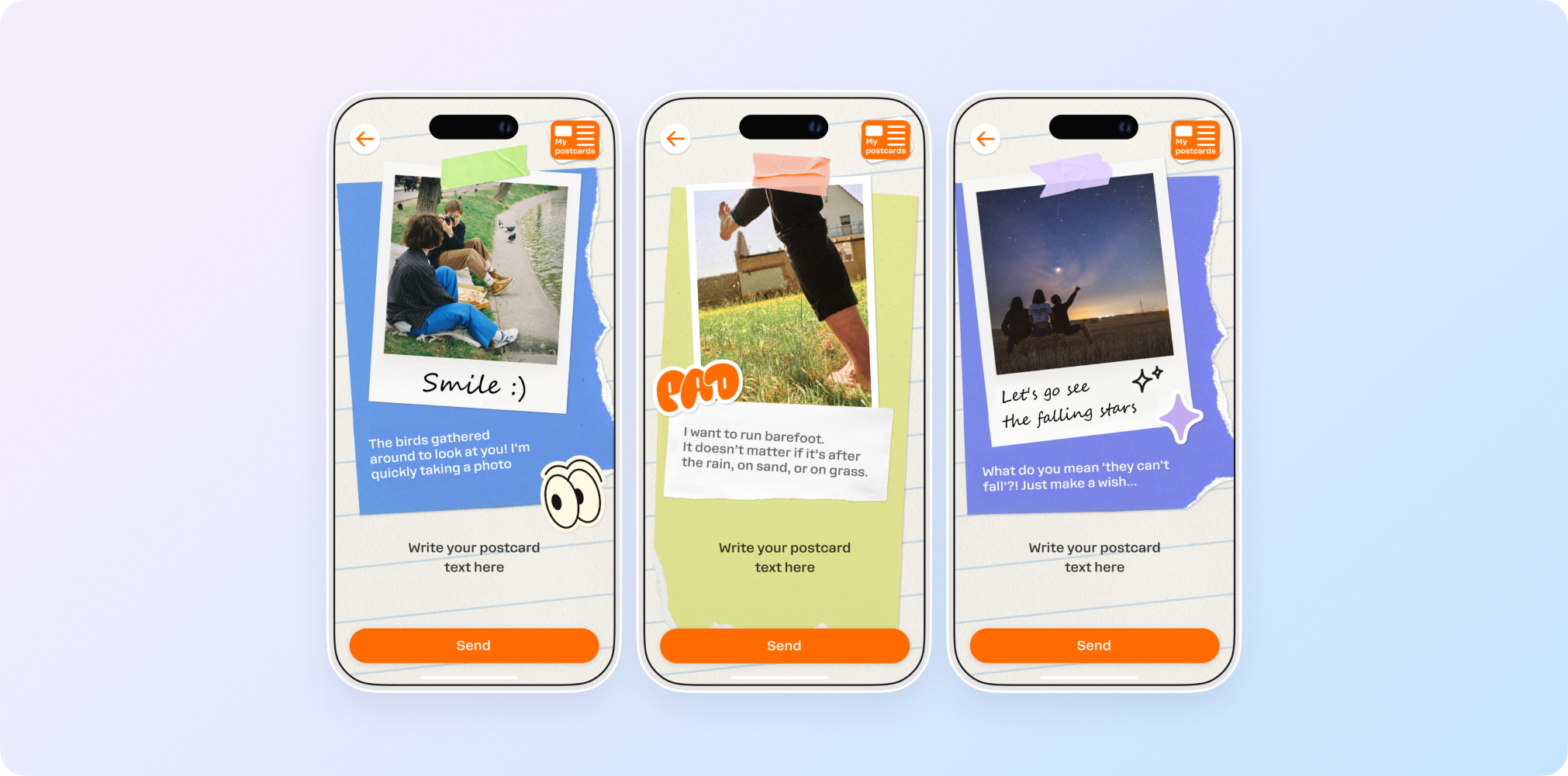.webp?2025-12-10T09:37:36.033Z)
Try 12 gamified ideas to bring the cheer back!

Building Customer Journey Through Player-Centered Gamification
Karina
Author @ InAppStory
"Gamification is 75% psychology and 25% technology." — Gabe Zichermann
People like progress. They enjoy small wins, tracking achievements, and feeling like they’re getting somewhere. When done right, gamification taps into basic human instincts: motivation, curiosity, and social connection.
Every stage of the customer journey is a chance to engage users through game-like elements. The key is knowing what actually works.
Why Gamification Matters
Gamification works because it taps into how people naturally think and behave. It’s about using psychological principles to create experiences that feel rewarding, engaging, and worth returning to.
Self-Determination Theory (SDT) suggests people are driven by three things:
- Autonomy – The feeling of control over one’s actions
- Competence – Mastering a skill and seeing improvement
- Relatedness – Connecting with others and feeling a sense of belonging
When gamification meets these needs, people stay engaged. People like seeing proof that they’re getting somewhere.
Immediate feedback also keeps the audience interested. Video games do this perfectly — fail a level, and you get instant feedback on what went wrong. It’s one of the many cognitive psychology tricks for keeping players hooked. Apps and platforms that adopt this approach make learning feel smoother.
Finally, people don’t just learn from trial and error. They learn from watching others. Albert Bandura’s Social Learning Theory explains why leaderboards, avatars, and community-driven challenges work: seeing others succeed makes users want to do the same.
What Works (And What Doesn't)
✅ Keeps users engaged:
- Visible progress (streaks, milestones, progress bars)
- Small, meaningful rewards
- Social elements that feel optional, not forced
- Features that make things easier, not harder
❌ Pushes people away:
- Too many pop-ups and notifications
- Meaningless rewards (badges for the sake of badges)
- Gamification that slows things down instead of helping
- Overcomplicated “fun” elements nobody asked for
Introducing Player-Centered Design (PCD)
While gamification is powerful, not all gamified experiences succeed. Many fail because they focus on mechanics rather than player motivation.
This is where Player-Centered Design (PCD) comes in.
What is Player-Centered Design (PCD)
PCD is an approach that prioritizes the player’s needs, experiences, and psychology in game design. Unlike traditional gamification, which often applies game mechanics superficially, PCD ensures that every element serves a meaningful purpose.
PCD aligns with Self-Determination Theory by supporting:
- Autonomy (freedom to make meaningful choices)
- Competence (progress and skill mastery)
- Relatedness (social connection)
By embedding PCD into gamified customer journeys, businesses can create more engaging and rewarding experiences that feel natural rather than forced.

Source: Interaction Design Foundation, CC BY-SA 4.0
How Player-Centered Design Enhances Each Stage of the Customer Journey
A typical customer journey has six key stages:
- Awareness (first encounter with your brand)
- Installation or Sign-Up (removing friction for new users)
- Onboarding (teaching them how things work)
- Active Use (regular interaction with the main features)
- Retention (keeping them engaged over time)
- Advocacy (turning satisfied users into brand champions)
Each of these stages benefits from gamification that follows Player-Centered Design principles.
1. Awareness (First Encounter with Your Brand)
📌 PCD Approach: First impressions matter. Instead of pushing random gamification elements, use player personas to identify what kind of experiences users enjoy. Then, design engaging, interactive content that matches their interests.
✅ How to implement PCD:
- Personality Quizzes – Help users discover their “game style” or find a product that suits them.
- Interactive Storytelling – Let users explore your brand’s value proposition through a guided experience.
- Mini Challenges – A teaser challenge that introduces core mechanics before signup (e.g., Duolingo’s fun intro quiz).
🚫 What to avoid: Unnecessary game-like gimmicks that distract from the actual value of the product.
2. Installation / Sign-Up (Removing Friction)
📌 PCD Approach: Reduce cognitive load. Players (and customers) should feel empowered during sign-up, not overwhelmed. The experience should be smooth, rewarding, and intuitive.
✅ How to implement PCD:
- “Hero’s Journey” Onboarding – Make sign-up feel like the first step of an adventure, reinforcing motivation.
- Progress Indicators – Use dynamic feedback (e.g., a progress bar that adapts to user input).
- Personalization – Let users pick avatars or themes that suit their style.
🚫 What to avoid: Mandatory tutorials or forced gamification (e.g., requiring users to “play” a tutorial before they even see the product’s main value).
3. Onboarding (Teaching How Things Work)
📌 PCD Approach: Effective onboarding adapts to different player types. Some people prefer quick-start guides, while others enjoy exploring at their own pace.
✅ How to implement PCD:
- Adaptive Tutorials – Offer multiple onboarding paths (quick vs. detailed).
- Immediate Small Wins – Celebrate first actions (e.g., “Congrats! You just unlocked your first feature”).
- Non-linear Exploration – Let users discover features organically instead of forcing a rigid sequence.
🚫 What to avoid: Overloading users with excessive information upfront.
The emphasis is on context and storyline, creating an experience that not only informs but also engages users on a deeper level.
A great example of this is fintech, where there is often a barrier to entry for new users. Games can teach users how to invest in the stock market by breaking down complex financial concepts into simple, interactive tasks.

To learn more about how gamification supports businesses in various industries, check out Gamification Apps for Business.
4. Active Use (Keeping Users Engaged)
📌 PCD Approach: A good game keeps players engaged through autonomy, challenge, and social connection. A good customer journey does the same.
✅ How to implement PCD:
- Dynamic Difficulty Adjustment (DDA) – Features that scale with user skill level (e.g., financial apps adjusting savings goals based on past performance).
- “Choose Your Path” Challenges – Let users opt into challenges that suit their pace.
- Meaningful Social Interactions – Leaderboards for competitive players, but also “co-op” challenges for those who prefer collaboration.
🚫 What to avoid: A one-size-fits-all approach that forces users into challenges they don’t enjoy.
5. Retention (Encouraging Continued Engagement)
📌 PCD Approach: Games keep players returning through anticipation and reward cycles. A customer journey should do the same without feeling manipulative.
✅ How to implement PCD:
- Personalized Rewards – Instead of generic badges, reward actions based on user preferences.
- Limited-Time Events – Seasonal or special challenges (e.g., a “Halloween challenge” or “Back-to-school special”) that align with real-world events.
- Narrative Continuation – Features that evolve over time (e.g., “Your journey continues… Here’s what’s next!”).
🚫 What to avoid: Overuse of notifications and artificial scarcity tactics that feel like pressure rather than excitement.
Daily or seasonal gamified events can become habit-forming. The key is to combine genuine rewards with an element of anticipation, so users look forward to checking in.
For example, Dodo Pizza transformed a classic advent-calendar idea into a summer-themed campaign, unveiling fresh postcards and special offers each day. This playful approach encouraged daily returns and inspired social sharing.

Over half their users participated, and more than a million postcards were sent. The campaign wasn’t purely about pushing discounts; it also added an emotional, “small discovery” element that resonated with users, boosting engagement and brand loyalty.
6. Advocacy (Turning Users into Brand Champions)
📌 PCD Approach: A player-centered experience makes users feel so invested that they naturally share it with others.
✅ How to implement PCD:
- Storytelling Leaderboards – Instead of just ranking users, highlight their personal journey (e.g., “Top Achievers: John saved $5,000 in 3 months!”).
- Social Sharing with Purpose – Encourage sharing progress, but ensure it adds value to the user’s network.
- VIP Features for Advocates – Exclusive badges, early access to beta features, or special discounts for long-term users.
🚫 What to avoid: Forcing referrals or incentivizing shares that feel transactional rather than genuine.
Final Takeaway: Gamification Without Player-Centered Design Fails
Gamification only works if it resonates with users’ motivations. Player-Centered Design ensures that every game element feels meaningful.
By designing each stage of the customer journey with PCD in mind, you create an experience that:
✅ Feels engaging, not forced
✅ Aligns with natural user behavior
✅ Encourages long-term participation
If gamification is 75% psychology and 25% technology, then player-centered design is the missing piece that makes it work.

